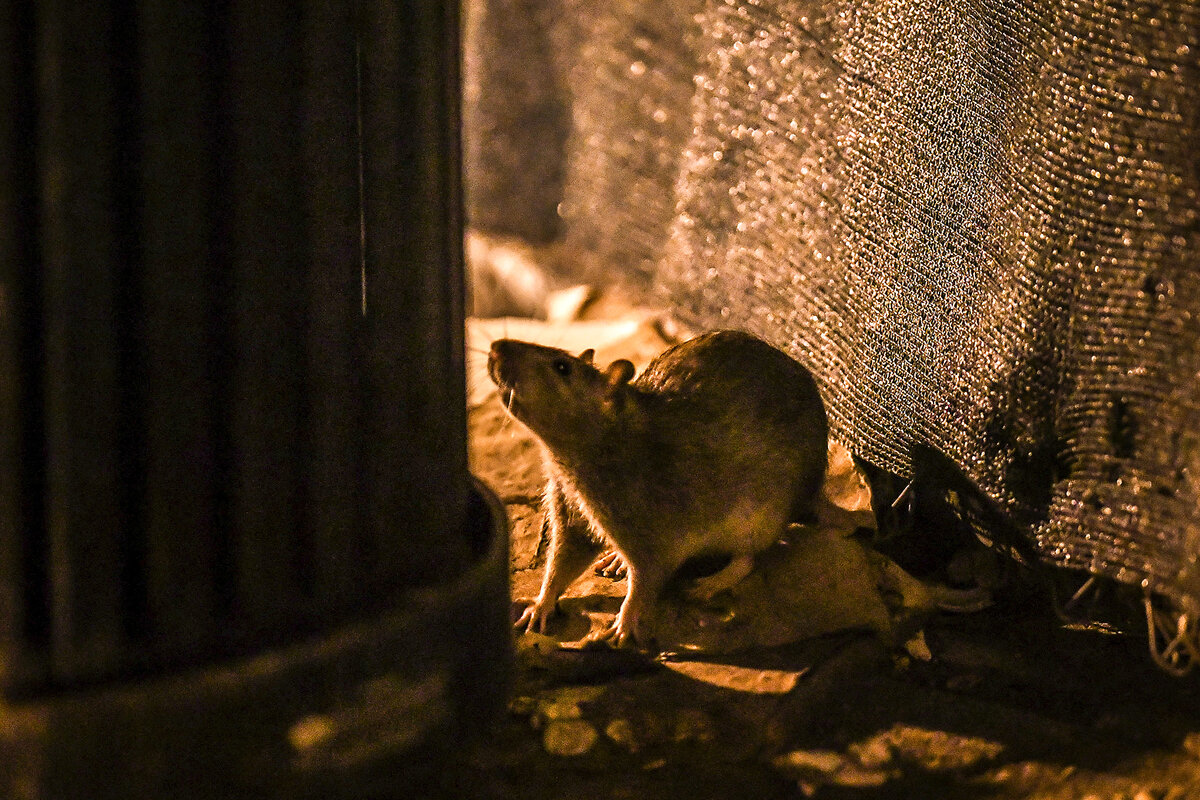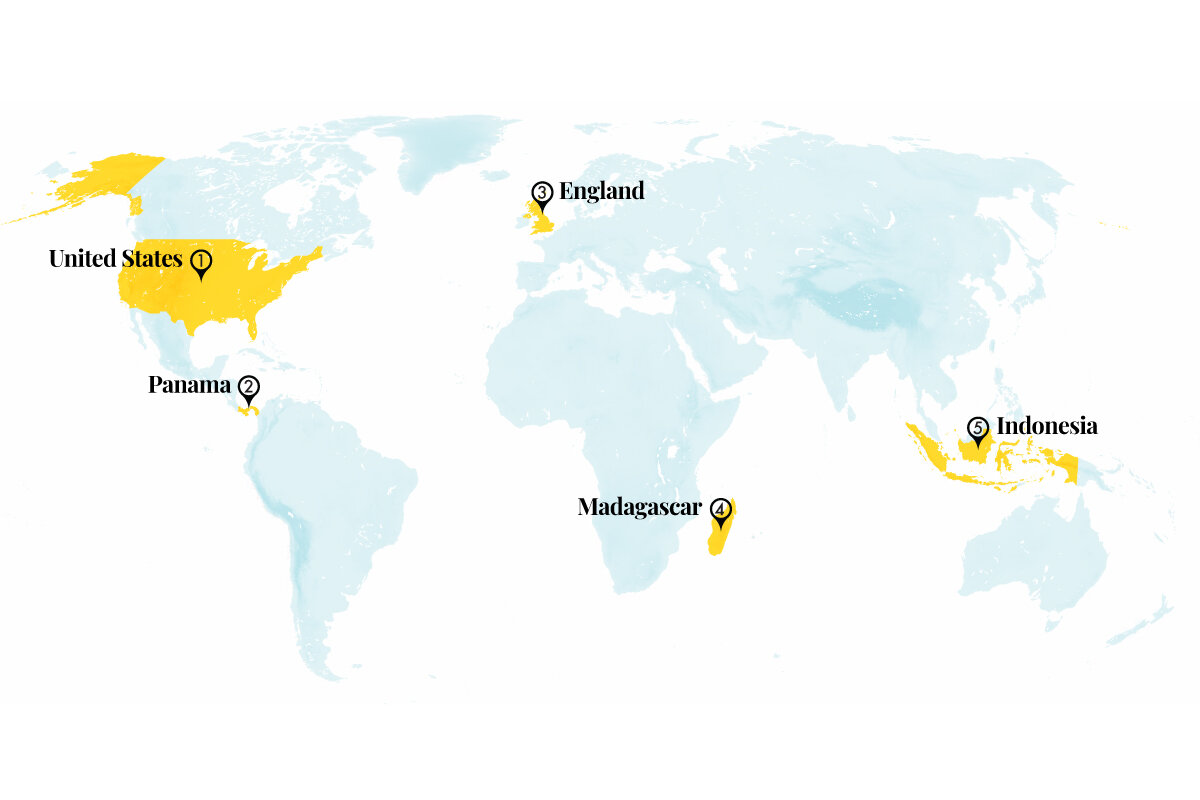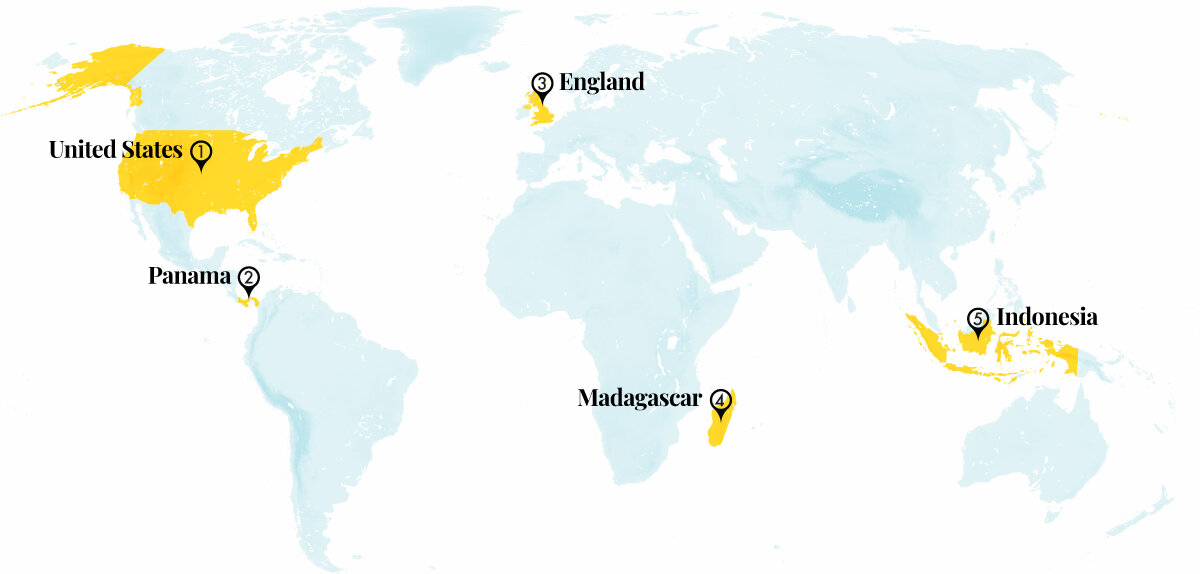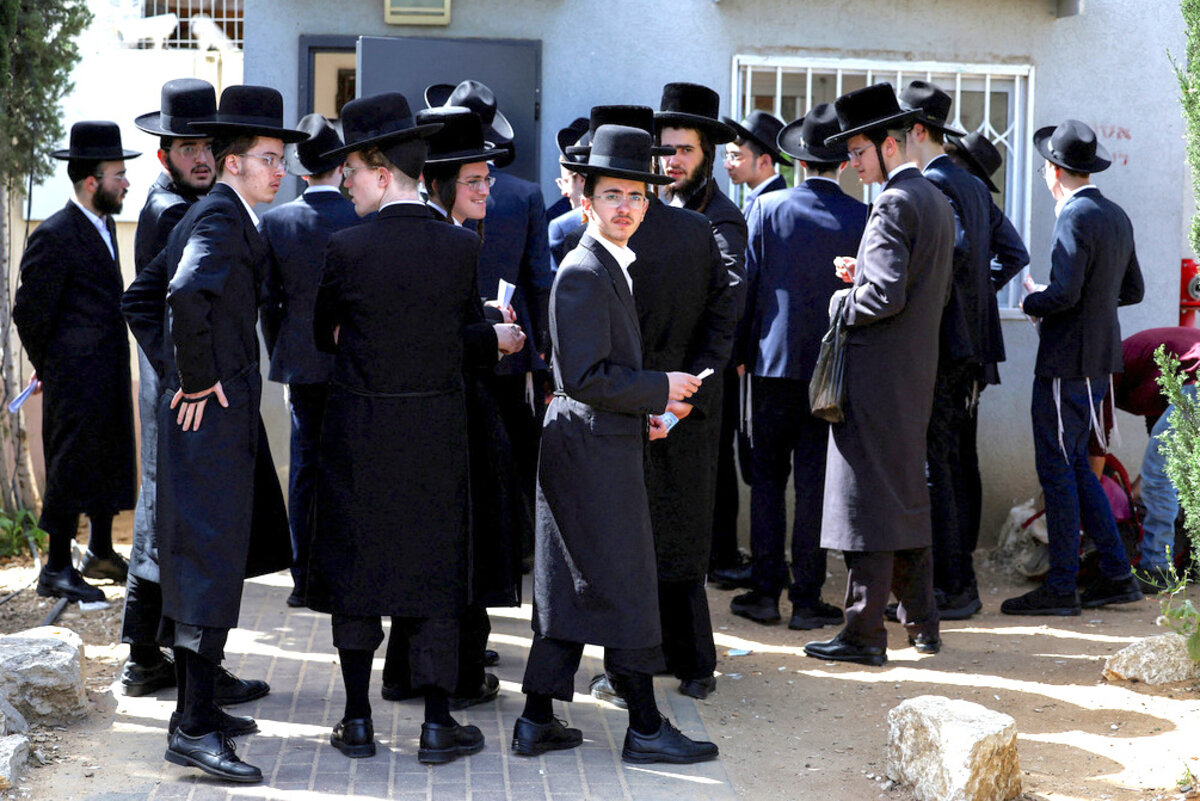Civil society’s response to Oct. 7 is planting the seeds of a new political class. But what Israelis see as the worst day in their history is also profoundly challenging their sense of security and belonging.

Why is Christian Science in our name?
Our name is about honesty. The Monitor is owned by The Christian Science Church, and we’ve always been transparent about that.
The Church publishes the Monitor because it sees good journalism as vital to progress in the world. Since 1908, we’ve aimed “to injure no man, but to bless all mankind,” as our founder, Mary Baker Eddy, put it.
Here, you’ll find award-winning journalism not driven by commercial influences – a news organization that takes seriously its mission to uplift the world by seeking solutions and finding reasons for credible hope.
Explore values journalism About usMonitor Daily Podcast
- Follow us:
- Apple Podcasts
- Spotify
- RSS Feed
- Download
 Amelia Newcomb
Amelia Newcomb
Many have said that Hamas’ Oct. 7 attack shook Israelis to their core. But what does that mean? In our first story, Howard LaFranchi, as Middle East Editor Ken Kaplan puts it, “takes you to that core.”
Howard has been visiting Israel regularly since the attack, building a deeply reported portrait of the dynamics coursing through society. Even if you think you know Israel, you’ll want to read this story.
Already a subscriber? Log in
Help fund Monitor journalism for $11/ month
Monitor journalism changes lives because we open that too-small box that most people think they live in. We believe news can and should expand a sense of identity and possibility beyond narrow conventional expectations.
Our work isn't possible without your support.
Today’s stories
And why we wrote them
A deeper look
( 10 min. read )
Today’s news briefs
• U.S. to Israel: President Joe Biden has told Israeli Prime Minister Benjamin Netanyahu that future U.S. support depends on new steps to protect civilians and aid workers, saying that an “immediate ceasefire is essential.” The leaders’ conversation comes as an Israeli strike killed seven workers for the World Central Kitchen.
• No delay: A judge rejected Donald Trump’s bid to delay his April 15 hush money criminal trial until the Supreme Court rules on the presidential immunity claims he raised in another of his criminal cases. Manhattan Judge Juan Merchan ruled Mr. Trump’s lawyers had myriad opportunities to raise the issue earlier.
• Civil servants: The U.S. Office of Personnel Management issued a new rule making it harder to fire thousands of federal employees, hoping to head off former President Donald Trump’s promises to remake the workforce along ideological lines if he wins the White House in November. The rule will bar career civil servants from being reclassified as at-will workers.
• NATO at 75: NATO foreign ministers meet to celebrate a milestone, having agreed to start planning for a greater role in coordinating military aid to Ukraine. “As we face a more dangerous world, the bond between Europe and North America has never been more important,” NATO Secretary-General Jens Stoltenberg said.
( 4 min. read )
Mothers in public office can weigh in constructively on new laws that affect women, children, and families. Some of them are trying to make government service more family-friendly in the first place.
( 7 min. read )
In the age-old battle against rats, veterans in Washington, D.C., are reaching consensus that victory is measured not in annihilation, but in changing human behavior by building community trust and cooperation.
Points of Progress
( 5 min. read )
In our progress roundup, the left and right find common ground on housing issues in the United States, and demand for a British nonprofit grows thanks to professionals who want to learn how to teach.
The Monitor's View
( 2 min. read )
The conflict in Gaza has sharpened a debate within Israel about the purpose of Jewish prayer during war. Does it bring peace and security as much as the carrying of arms into battle?
The question was sharpened this week after the country’s High Court of Justice barred state funding to ultra-Orthodox schools for students who are of the age for military conscription. The ruling gives the government 30 days to come up with a strategy for folding this large religious minority, known as Haredim, into the military.
A religious exemption from the draft for Haredim dates back to the founding of modern Israel in 1948. The ultra-Orthodox communities argue that their study, prayer, and living according to Jewish law constitute an essential defense of Jewishness and the Jewish people.
“We live by the word of God, who is above everything,” Yehuda Cohen, a young Haredi resident of Jerusalem, told The Guardian. “You see, studying the Torah, especially in these days of conflict, is a way for us to fight the war.”
As Israeli society has grown increasingly discontent with the war in Gaza, the special treatment for Haredim has become a source of division. The issue renews a debate familiar to many wartime societies about finding a balance between equal sharing of national defense and a right of individuals to rely on conscience or prayer as a means of peace. Getting that balance wrong in either direction can weaken the cohesion of a nation at a point when it cannot afford to lose either.
Granting exemptions from military service too broadly can undermine a government’s aims and erode the values that bind societies, wrote Wojciech Ciszewski, a law professor at Jagiellonian University in Kraków, Poland, in the Oxford Journal of Law and Religion in 2021.
The war in Gaza has boosted calls for shared sacrifice among all Israelis. A poll by the Israeli Democracy Institute in March showed that 70% of Israeli Jews support drafting Haredim. Yet in the debate over the defensive value of prayer and religious practice, the conflict is also prompting Israelis to confront more deeply the different causes of war – and whether prayer can prevent it.
“Real Jews ... want to live in peace with the neighbours like we lived for hundreds of years,” wrote Rabbi Naftuli Flohr, a member of one of Jerusalem’s oldest Haredi associations, in a post on X, formerly Twitter.
All around the world, people have responded to the wars in Gaza, Ukraine, Sudan, and elsewhere with prayer. The debate in Israel over whether to draft young Haredi men has put a useful spotlight on alternative ways to end conflict and bring peace.
A Christian Science Perspective
Each weekday, the Monitor includes one clearly labeled religious article offering spiritual insight on contemporary issues, including the news. The publication – in its various forms – is produced for anyone who cares about the progress of the human endeavor around the world and seeks news reported with compassion, intelligence, and an essentially constructive lens. For many, that caring has religious roots. For many, it does not. The Monitor has always embraced both audiences. The Monitor is owned by a church – The First Church of Christ, Scientist, in Boston – whose founder was concerned with both the state of the world and the quality of available news.
( 3 min. read )
Through a better understanding of our spiritual identity, we can break free from discord, including injury.
Viewfinder
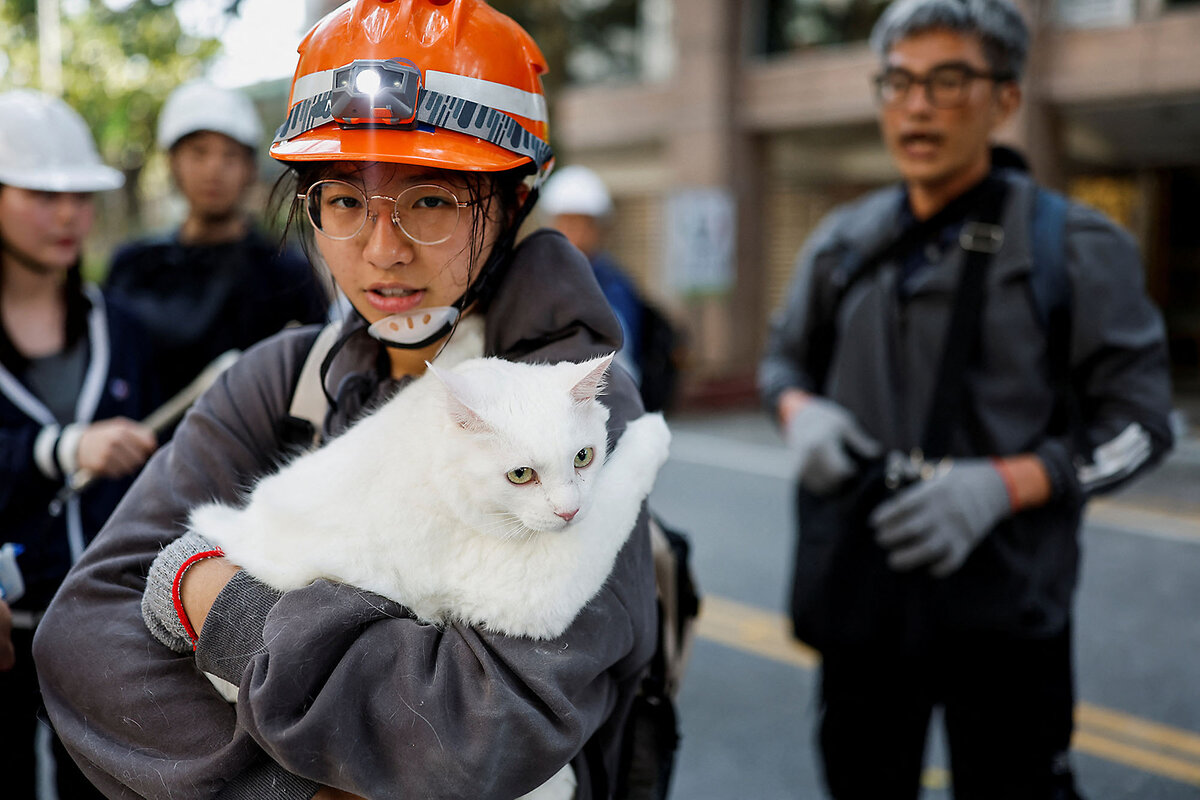
A look ahead
I hope you enjoyed our stories today. Tomorrow, we’ll have a report by Sarah Matusek and Henry Gass from Eagle Pass, Texas, looking at the state’s use of National Guard and other state troops.





